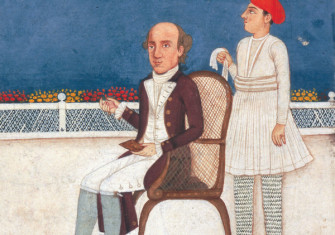The Death of Clive of India
Robert Clive’s death has long been attributed to suicide. What is the evidence?

In the days following the sudden death, aged 49, of Robert Clive – ‘Clive of India’ – on 22 November 1774, rumours as to how it had happened spread fast. Despite having previously received knowledge to the contrary, the writer Horace Walpole reported to the diplomat Sir Horace Mann that the leading theory was that Clive had cut his own throat. Lady Mary Coke recorded in her journal that Clive had ‘killed himself’. Such stories were not uncommon in cases of high-profile society deaths and soon references to Clive having died in this way began to surface in popular literature. In 1777 a scurrilous biography by Charles Carraccioli stated dramatically that Clive ‘was found weltering in his blood’ with a razor nearby. In May 1778 Town and Country Magazine imagined a conversation in the afterlife between Clive and Charles Yorke. Yorke was lord chancellor when he died suddenly in 1770 and his death was also described as a suicide by Walpole. Long regarded as such, it is now doubted.







